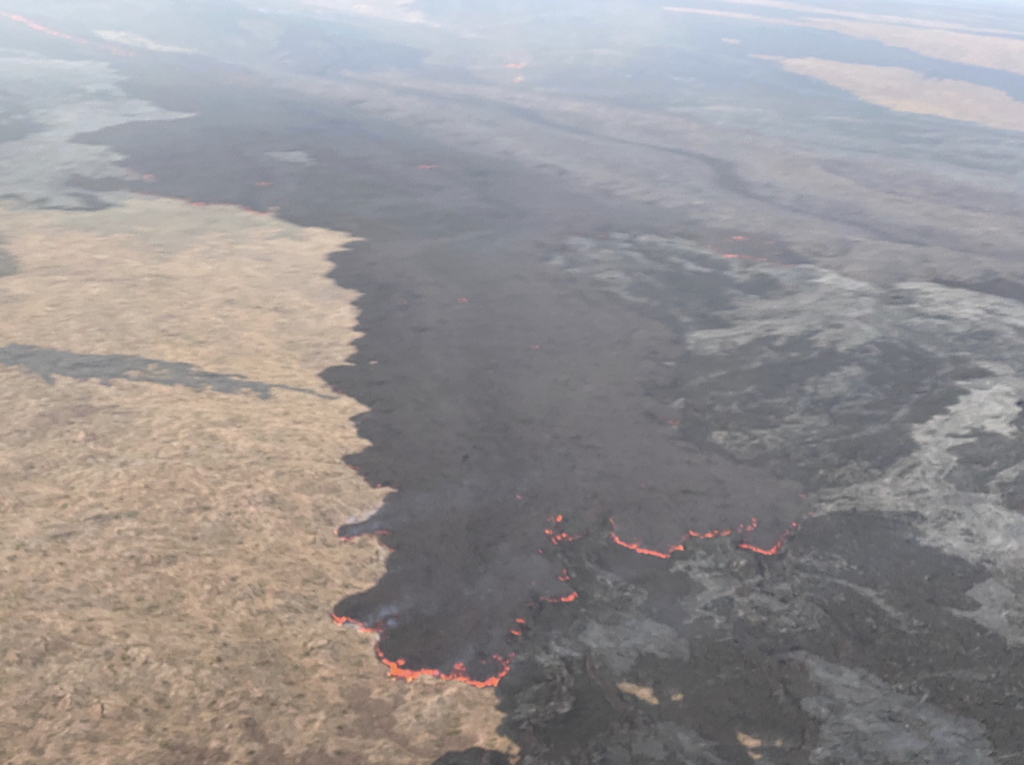New breakout at Mauna Loa flow front slows the advance of lava towards highway

A new breakout at the Mauna Loa flow front reported overnight has removed lava from the channel, slowing the advance rate of the main flow, according to a new update issued by the Hawaiian Volcano Observatory on Wednesday morning.
Fissure 3, the only active fissure at this time, continues to feed lava downhill, moving slowly northward toward the Daniel K. Inouye Highway (Saddle Road). The flow front was last located 1.8 miles from the highway, as of 6 a.m., and had slowed its advance rate to 20 feet per hour.
The new breakout is located about 2.8 miles behind the tip of the main flow on the east side, according to the update, according to the HVO.

The HVO reminds the public: “There are many variables at play and both the direction and timing of flow advances are expected to change over periods of hours to days, making it difficult to estimate when or if the flow will impact Daniel K. Inouye Highway.”

Scientists with the HVO continue to report the wafting of volcanic glass strands, or Pele’s hair as far away as Laupāhoehoe.
Resources and links:
- The Hawaiʻi County Civil Defense agency has a web page on volcano hazards with maps of inundation zones and hazard zones. Alerts are posted here.
- Hawai‘i Volcanoes National Park has closed the Mauna Loa summit area to visitors.
- Vog information can be found here.
- What does a warning and warning alert level mean? Find out here.
- HVO: Preparing for the next eruption of Earth’s largest active volcano.
- Lava Flows from Mauna Loa (1843-2018)
- Mauna Loa Eruption Response Times over the past 200 years
- Current alerts.
- Mauna Loa webcams.
- Frequently Asked Questions about Mauna Loa Volcano










